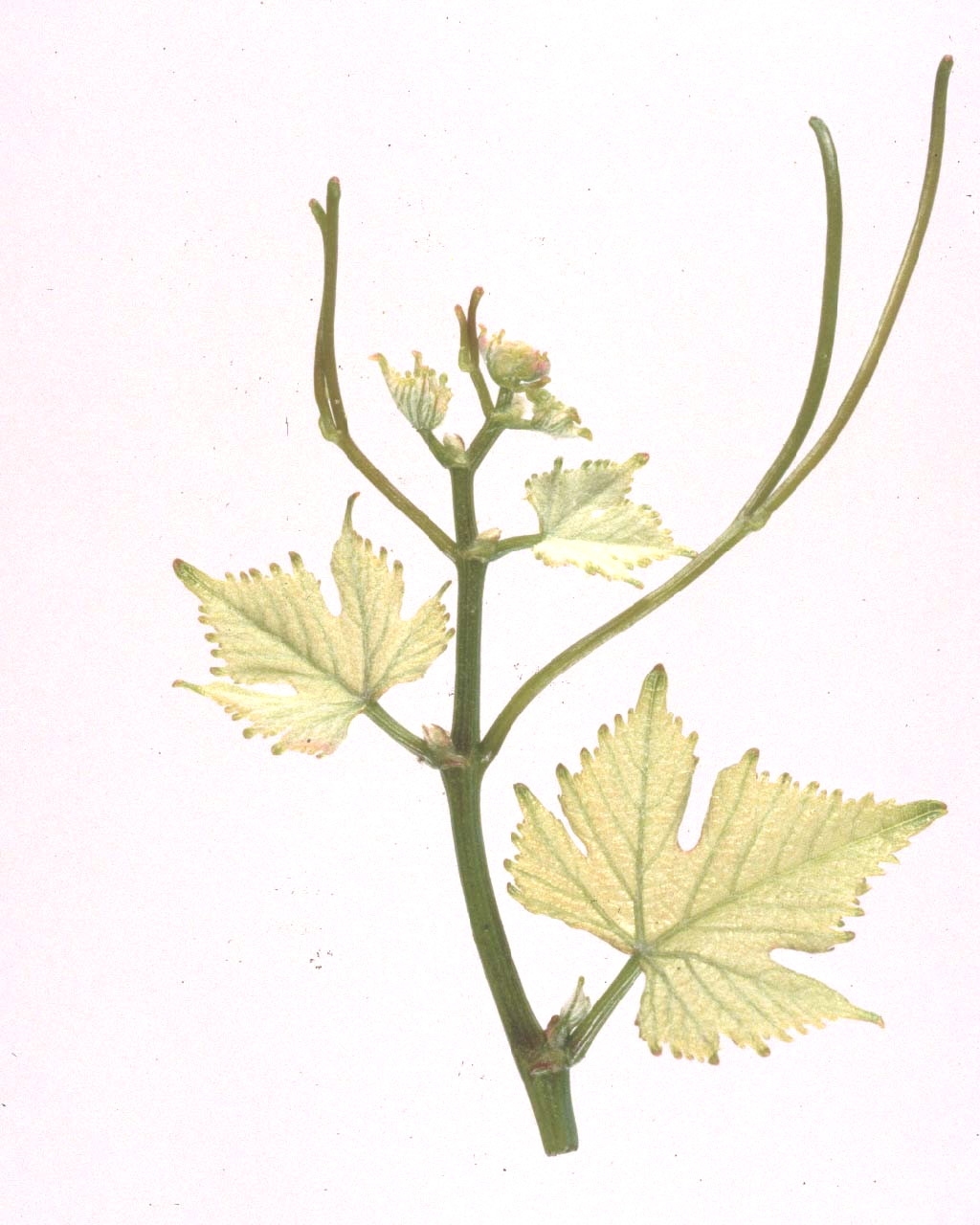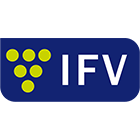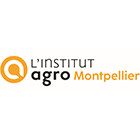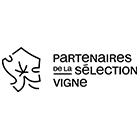Pinot noir
N
Wine grape variety.
The geographical origin of the variety is specified or, if this is not possible, the area in which it is traditionally cultivated. The genetic origin of the variety is also indicated whenever it is known from hybridiser data or from genetic analyses published or obtained by the teams at INRAE in Montpellier (UMR AGAP) and Vassal-Montpellier Grapevine Biological Resources Centre (CRB-Vigne).
This variety is originally from Burgundy.
This information indicates the normal and statutory use for the grapes.
Wine grape variety.
Name under which the variety is officially registered in the catalogue of grapevine varieties in France and under which it may be propagated and disseminated.
Pinot noir
Recognised alternative names that may be used to identify the propagation material of the variety in France or in other member countries of the European Union.
In the European Union, Pinot noir is officially called by other names: Blauer Burgunder (Austria), Blauer Spätburgunder (Germany), Modri pinot (Slovenia), Pinot Nero (Italy), Pinot crni (Croatia) and Rulandské modré (Czech republic, Slovakia). These synonyms are officially recognized in France regarding plant propagation material.
This information indicates on which list the variety is registered (A or B), whether it is classified for wine grapes, and in which member countries of the European Union the variety is also officially registered (for more information, see the "Legislation" menu.
In France, Pinot noir is officially listed in the "Catalogue of vine varieties" on the A list and classified. This variety is also listed in the catalogues of other Member States of the European Union: Austria, Belgium, Bulgaria, Croatia, Cyprus, Czech Republic, Germany, Greece, Hungary, Italy, Luxembourg, Malta, Netherlands, Portugal, Romania, Slovakia, Slovenia and Spain.
Evolution of cultivated areas in France
The figures provided are taken from vineyard land registers (IVCC, ONIVIT, ONIVINS), general agricultural censuses (SCEES-INSEE) and the current computerised vineyard register (DGDDI, FAM).
Regional vine planting data is available on the following site: https://visionet.franceagrimer.fr/Pages/DonneesInteractivesDocs.aspx?sousmenu=observatoire%20de%20la%20viticulture.
The figures provided are taken from vineyard land registers (IVCC, ONIVIT, ONIVINS), general agricultural censuses (SCEES-INSEE) and the current computerised vineyard register (DGDDI, FAM). Regional vine planting data is available on the following site: https://visionet.franceagrimer.fr/Pages/DonneesInteractivesDocs.aspx?sousmenu=observatoire%20de%20la%20viticulture.
Year |
ha |
|
|---|---|---|
|
1958 |
8535 |
|
|
1968 |
11876 |
|
|
1979 |
17210 |
|
|
1988 |
21971 |
|
|
1998 |
25871 |
|
|
2008 |
28006 |
|
|
2018 |
36727 |
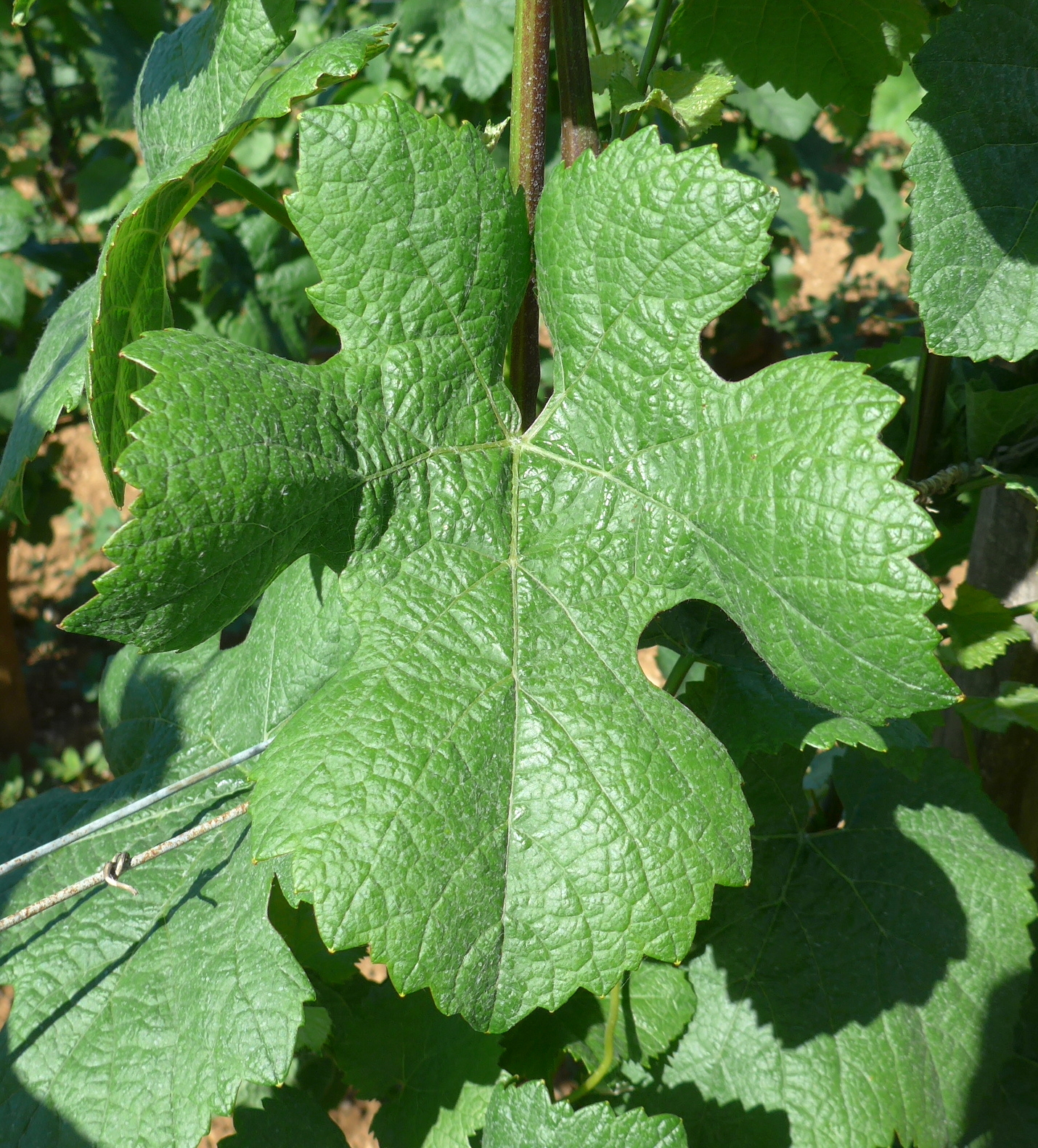
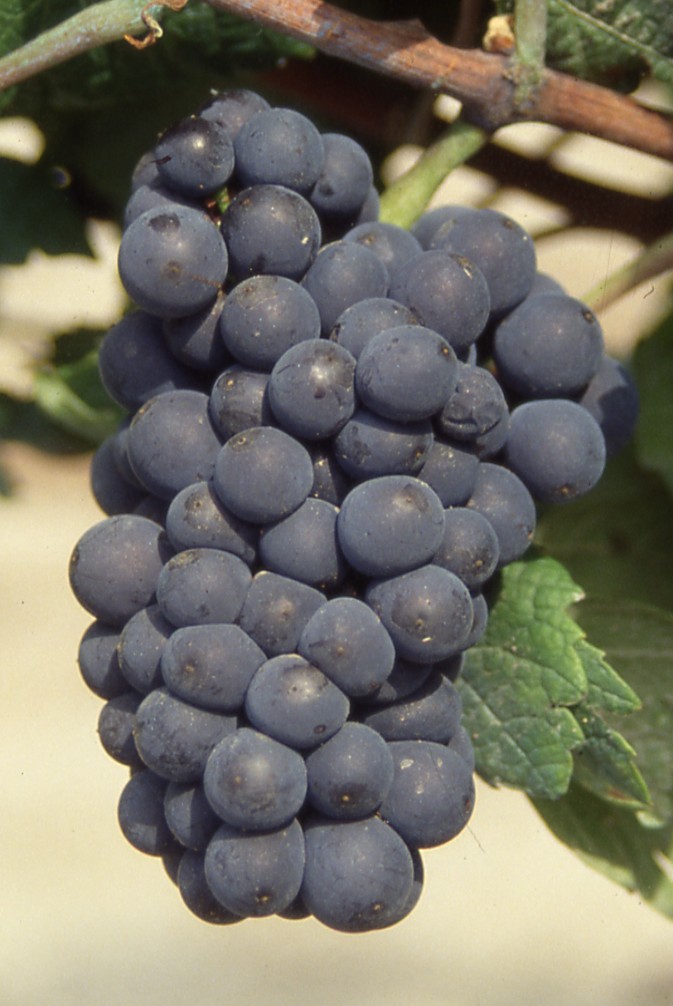
Only the principal ampelographic elements enabling the varieties to be characterised and identified are provided. They are presented according to the descriptor code recognised by the International Organisation of Vine and Wine (OIV), the International Union for the Protection of New Varieties of Plants (UPOV), the Community Plant Variety Office (OCVV) and Bioversity International (for more information, see the "Ampelographic glossary" menu). The photographs of leaves and grapes were taken in natural conditions, on the vine, in very similar situations in terms of growing conditions (sandy soil, Mediterranean coast): - Domaine de l'Espiguette (IFV), Le Grau du Roi (Gard), - Domaine de Vassal (INRAE), Marseillan (Hérault), - La Gaillarde Campus (Institut Agro | Montpellier SupAgro), Montpellier (Hérault). Only a few photographs, including the tips of bunches, were taken in other conditions.
- the tip of the young shoot with a medium to high density of prostrate hairs,
- the green or yellow young leaves,
- the shoots with red-striped internodes,
- the dark or very dark green adult leaves, entire or with three or five lobes, with a slightly open or closed petiole sinus, with lobes facing each other towards the lower side of the blade in a coxcomb shape, short teeth, a twisted, strongly blistered leaf blade, and on the lower side of the leaves, a low density of prostrate hairs,
- the round-shaped or slightly ellipsoid berries.
Genetic profile
The genetic profile of the variety is provided for the 9 microsatellite markers (or SSR markers) selected under the European programme GrapeGen06 (http://www.eu-vitis.de/index.php) and by the OIV. The absolute size values of the alleles may vary slightly from one laboratory to another, but the relative differences between the two alleles of one single microsatellite are constant. The genetic analyses were conducted by the INRAE Montpellier team (UMR AGAP) and the IFV’s Plant Material Centre.
| Microsatellite | VRZAG62 | VRZAG79 | VVMD25 | VVMD27 | VVMD28 | VVMD32 | VVMD5 | VVMD7 | VVS2 |
|---|---|---|---|---|---|---|---|---|---|
|
Allele 1 |
188 |
240 |
238 |
182 |
216 |
239 |
225 |
239 |
135 |
|
Allele 2 |
194 |
246 |
248 |
186 |
235 |
271 |
236 |
243 |
149 |
The data on suitability are the result of field observations or, if none are available, of bibliography mining and the study of bibliographic references.
Pinot noir is particularly adapted to temperate climate zones. This variety gives best results in clay-limestone terroirs. In hot climates, grape maturation is very fast. It is sensitive to heat and the berries tend to shrivel quickly when over ripe. Pinot noir is generally trained. It expresses its fulfilment when its vigor is low to moderate and yields are limited. This variety, which requires careful debudding tends to produce a large number of grappillons.
These remarks are also the result of field observations or, if none are available, of bibliography mining and study of bibliographic references.
Pinot noir is a delicate variety, sensitive to the main diseases, particularly downy mildew, rotbrenner, grey rot (on clusters and leaves), and vine leafhoppers.
The size of grape clusters and berries indicated are based on the following scales: - Wine grape varieties Size : Very small Bunch (g) : ≤ 100 Berry (g) : 1 - Table grape varieties Bunch (g) : 150 Berry (g) : 2 - Wine grape varieties Size : Small Bunch (g) : 100 - 200 Berry (g) : 1,5 - 2 - Table grape varieties Bunch (g) : 150 - 250 Berry (g) : 2 - 3,5 - Wine grape varieties Size : Moderate Bunch (g) : 200 - 250 Berry (g) : 2 - 2,5 - Table grape varieties Bunch (g) : 250 - 400 Berry (g) : 3,5 - 5,5 - Wine grape varieties Size : Large Bunch (g) : 250 - 400 Berry (g) : 2,5 - 3,5 - Table grape varieties Bunch (g) : 400 - 700 Berry (g) : 5,5 - 8 - Wine grape varieties Size : Very large Bunch (g) : 400 Berry (g) : 3,5 - Table grape varieties Bunch (g) : 700 Berry (g) : 8 Remarks concerning the characteristics of the wines are generally based on tastings organised by juries of professionals.
The bunches and berries are very small to small in size. Pinot noir, under favorable conditions, can produce extremely high quality red wines, combining finesse, intensity and aromatic complexity, that are suited for ageing. The sugar accumulation potential is high for a moderate acidity (sometimes insufficient when ripe) and a color which is often not very intense, but can be maintained over time. Pinot noir also makes quality base wines for the production of sparkling wines.
In this section, the list of certified clones is given. Information on clone conservatories is also provided.
The 48 certified Pinot noir clones carry the numbers 111, 112, 113, 114, 115, 162, 163, 164, 165, 236, 292, 372, 373, 374, 375, 386, 388, 389, 459, 460, 461, 462, 521, 528, 583, 617, 665, 666, 667, 668, 743, 777, 778, 779, 780, 792, 828, 829, 870, 871, 872, 927, 943, 1184, 1185, 1196, 1197 and 1306. Conservatories-collections, planted in Alsace, Burgundy (Côte d'Or and Saône-et-Loire) and in Champagne between 1971 and 1995, gather almost 800 clones.
The growth stages indicated are the result of obsrvations made at the Domaine de Vassal Estate where the set of these varieties form a collection. The results are indicated compared to the Chasselas vine variety as a reference in order to make comparisons between years and different sites. As such, for information purposes, the dates for the Chasselas B growth stage at Domaine de Vassal are as follows: - Bud burst, 21 March (average over 50 years) - Grape maturity, 14 August (average over 50 years)
Bud burst: 2 days after Chasselas.
Grape maturity: early-season, half a week to 1 week after Chasselas
Bibliography
- Catalogue des variétés et clones de vigne cultivés en France. Collectif, 2007, Ed. IFV, Le Grau-du-Roi, France.
- Documentary collections of the Centre de Ressources Biologiques de la Vigne de Vassal-Montpellier, INRAE - Institut Agro Montpellier, Marseillan, France.
- Dictionnaire encyclopédique des cépages et de leurs synonymes. P. Galet, 2015, Ed. Libre&Solidaire, France.
- Traité général de viticulture, Ampélographie. P. Viala and V. Vermorel, 1901-1909, Ed. Masson, Paris, France.
Description of clones approved in France
In this section, the list of certified clones is given. Information on clone conservatories is also provided.
In this section, the list of certified clones is given. Information on clone conservatories is also provided.
-
Clone number
-
Brand
-
Origin
Region, department or winegrowing region in which the “clone mother plant” was identified and selected.
-
Selection
Body or bodies which selected the clone. In France, clonal selection is the responsibility of the selection organisations (themselves accredited by the ministry in charge of agriculture), usually in close collaboration with a technical partner working in a winegrowing region. For clones certified after 1999, the name of the partner or partners who took part in the selection work is also included. (NB: CA = Chamber of Agriculture).
-
Year of approval
Year in which the clone was certified by the FranceAgriMer board further to a proposal by the Vine section of the CTPS (Permanent Technical Committee for Plant Selection).
-
Agronomic Reference
Region, department or winegrowing region in which the agronomic and technological data were collected.
-
Surface in multiplication
Surface area in hectares (ha) of stock nurseries used for propagation for the year under consideration (in brackets), which allows the available potential to be evaluated. Clones with a surface area of between 0.01 and 0.10 ha are shown as <0.10 ha. Clones of limited dissemination, but for which we have technical data, are shown as <0.01 ha. Other clones are given as “low-dissemination clone”, which means that the clone has been certified only recently or has not been propagated. In both cases, only the initial material is planted in the selection centres.
-
Agronomic DataFertility mediumProduction level mediumCluster weight mediumSusceptibility to Botrytis medium to high
-
Technological Data
-
Sugar richness medium
-
Oenological skills wines with a fairly tannic structure
-
Other information
-
General note irregular production. Clone a little more susceptible to grey rot.
-
Agronomic DataFertility mediumProduction level mediumCluster weight medium
-
Technological Data
-
Sugar richness medium
-
Oenological skills balanced wines with not very noticeable tannins
-
Other information
-
General note production level sometimes irregular
-
Agronomic DataFertility mediumProduction level low to mediumCluster weight low to mediumBerry size medium
-
Technological Data
-
Sugar richness medium to high
-
Color potential medium to high
-
Total acidity medium
-
Tannic structure medium
-
Oenological skills aromatic, typical and fairly tannic wines
-
Other information
-
General note clone sometimes irregular but bringing an interesting qualitative potential in blends
-
Agronomic DataFertility low to mediumProduction level low to mediumCluster weight low to mediumBerry size medium
-
Technological Data
-
Sugar richness medium to high
-
Color potential medium
-
Total acidity low to medium
-
Tannic structure medium to high
-
Oenological skills typical, complex wines with a good tannic structure
-
Other information
-
General note clone appreciated for its regularity of production, its agronomic characteristics and the quality of the wines obtained. Good aptitude for the production of wines suitable for ageing.
-
Agronomic DataFertility mediumProduction level mediumCluster weight low to medium
-
Technological Data
-
Sugar richness medium
-
Oenological skills suitable for the production of light red wines or rosé wines
-
Agronomic DataFertility mediumProduction level mediumCluster weight medium
-
Technological Data
-
Sugar richness medium
-
Oenological skills representative wines of the variety
-
Agronomic DataFertility highProduction level highCluster weight medium to highBerry size mediumSusceptibility to Botrytis medium to high
-
Technological Data
-
Sugar richness low
-
Color potential low to medium
-
Total acidity high
-
Tannic structure low to medium
-
Oenological skills recommended for the production of sparkling wines
-
Other information
-
General note clone considered «fairly typical» in Champagne
-
Agronomic DataFertility medium to highProduction level highCluster weight high
-
Technological Data
-
Sugar richness low to medium
-
Oenological skills not very full-bodied red wines
-
Other information
-
General note can be used for the production of sparkling wines but is considered as "not very typical" in Champagne
-
Agronomic DataFertility medium to highProduction level highCluster weight medium to highVigor mediumBerry size medium
-
Technological Data
-
Sugar richness low to medium
-
Color potential low to medium
-
Tannic structure medium
-
Oenological skills supple and fruity red wines
-
Other information
-
General note yield must be managed. Can be used for the production of sparkling wines
-
Agronomic DataFertility highProduction level medium to highCluster weight medium to highBerry size medium to high
-
Technological Data
-
Sugar richness low to medium
-
Color potential medium
-
Total acidity medium to high
-
Tannic structure medium
-
Oenological skills suitable for the production of sparkling wines
-
Other information
-
General note fleshy berries. Clone considered «typical» in Champagne.
-
Agronomic DataFertility highProduction level medium to highCluster weight highBerry size high
-
Technological Data
-
Sugar richness low
-
Oenological skills suitable for the production of sparkling wines
-
Other information
-
General note clone considered «not very typical» in Champagne
-
Agronomic DataFertility highProduction level medium to highCluster weight highBerry size high
-
Technological Data
-
Sugar richness low
-
Oenological skills suitable for the production of sparkling wines
-
Other information
-
General note clone considered «not very typical» in Champagne
-
Agronomic DataFertility medium to highProduction level highCluster weight highBerry size medium to high
-
Technological Data
-
Sugar richness medium
-
Color potential medium
-
Total acidity medium
-
Tannic structure medium to high
-
Oenological skills wines with a balanced and tannic structure
-
Other information
-
General note satisfactory quality if yield is managed
-
Agronomic DataFertility medium to highProduction level medium to highCluster weight medium to high
-
Technological Data
-
Sugar richness medium
-
Oenological skills suitable for the production of sparkling wines
-
Other information
-
General note clone considered as «typical» in Champagne
-
Agronomic DataFertility medium to highProduction level mediumCluster weight low to mediumVigor medium to high
-
Technological Data
-
Sugar richness medium
-
Color potential medium to high
-
Total acidity medium
-
Tannic structure low to medium
-
Oenological skills representative wines of the variety
-
Other information
-
General note erect bearing "pinot droit" type. Good behaviour in Languedoc.
-
Agronomic DataFertility highProduction level highCluster weight highSusceptibility to Botrytis medium to high
-
Technological Data
-
Sugar richness low
-
Oenological skills suitable for the production of sparkling wines
-
Other information
-
General note clone considered «fairly typical» in Champagne
-
Agronomic DataFertility highProduction level highCluster weight high
-
Technological Data
-
Sugar richness low
-
Oenological skills suitable for the production of sparkling wines
-
Other information
-
General note clone considered «fairly typical» in Champagne
-
Agronomic DataFertility low to mediumProduction level low to mediumCluster weight low to mediumBerry size medium
-
Technological Data
-
Sugar richness medium to high
-
Color potential medium
-
Total acidity medium
-
Tannic structure medium
-
Oenological skills fine and aromatic wines, good tannic structure
-
Other information
-
General note clone appreciated for its agronomic characteristics and the quality of the wines obtained. Good aptitude for the production of wines suitable for ageing.
-
Agronomic DataFertility highProduction level medium to highCluster weight low to mediumBerry size high
-
Technological Data
-
Sugar richness low
-
Oenological skills suitable for the production of sparkling wines
-
Other information
-
General note clone considered «not very typical» in Champagne
-
Agronomic DataFertility highProduction level highCluster weight high
-
Technological Data
-
Sugar richness medium
-
Oenological skills suitable for the production of sparkling wines
-
Other information
-
General note clone considered «not very typical» in Champagne
-
Agronomic DataFertility mediumProduction level lowCluster weight lowBerry size low to medium
-
Technological Data
-
Sugar richness high
-
Color potential medium to high
-
Total acidity low to medium
-
Tannic structure medium to high
-
Oenological skills typical, powerful and aromatic wines with a good tannic structure
-
Other information
-
General note clone appreciated for its agronomic characteristics, the quality and color of the wines obtained. Good aptitude for the production of wines suitable for ageing.
-
Agronomic DataFertility medium to highProduction level mediumCluster weight low to medium
-
Technological Data
-
Sugar richness medium to high
-
Oenological skills suitable for the production of sparkling wines
-
Other information
-
General note clone considered as «typical» in Champagne
-
Agronomic DataFertility highProduction level medium to highCluster weight highBerry size high
-
Technological Data
-
Sugar richness low
-
Oenological skills suitable for the production of sparkling wines
-
Other information
-
General note clone considered as «typical» in Champagne
-
Agronomic DataFertility medium to highProduction level medium to highCluster weight medium to high
-
Technological Data
-
Sugar richness medium
-
Oenological skills suitable for the production of sparkling wines
-
Other information
-
General note clone considered as «typical» in Champagne
-
Agronomic DataFertility mediumProduction level lowCluster weight lowBerry size low to medium
-
Technological Data
-
Sugar richness high
-
Color potential medium to high
-
Total acidity medium
-
Tannic structure medium to high
-
Oenological skills typical, aromatic, round and balanced wines with a good tannic structure
-
Other information
-
General note clone carrying the leafroll associated virus 2 variant Red Globe. Appreciated for its agronomic characteristics, the quality and colour of the wines obtained. Good aptitude for the production of wines suitable for ageing.
-
Agronomic DataFertility highProduction level highCluster weight medium to high
-
Technological Data
-
Sugar richness low
-
Oenological skills representative wines of the variety
-
Agronomic DataFertility medium to highProduction level medium to highCluster weight medium to high
-
Technological Data
-
Sugar richness medium
-
Oenological skills suitable for the production of sparkling wines
-
Other information
-
General note clone considered as «typical» in Champagne
-
Agronomic DataFertility medium to highProduction level highCluster weight high
-
Technological Data
-
Sugar richness low
-
Oenological skills suitable for the production of sparkling wines
-
Other information
-
General note clone considered as «typical» in Champagne
-
Agronomic DataFertility medium to highProduction level medium to highCluster weight medium to high
-
Technological Data
-
Sugar richness medium
-
Oenological skills suitable for the production of sparkling wines
-
Other information
-
General note clone considered as «typical» in Champagne
-
Agronomic DataFertility medium to highProduction level mediumCluster weight low to medium
-
Technological Data
-
Sugar richness medium to high
-
Oenological skills suitable for the production of sparkling wines
-
Other information
-
General note clone considered as «typical» in Champagne
-
Agronomic DataFertility mediumProduction level lowCluster weight lowBerry size low to medium
-
Technological Data
-
Sugar richness high
-
Color potential medium to high
-
Total acidity low to medium
-
Tannic structure medium to high
-
Oenological skills colored and concentrated wines
-
Other information
-
General note more drooping bearing. To be used with care because of its particular behaviour depending on the vintage.
-
Agronomic DataFertility low to mediumProduction level low to mediumCluster weight lowBerry size mediumSusceptibility to Botrytis medium
-
Technological Data
-
Sugar richness medium to high
-
Color potential medium to high
-
Total acidity medium
-
Tannic structure medium to high
-
Oenological skills wines appreciated for their color and structure in the mouth
-
Other information
-
General note low production level and above-average colour intensity
-
Agronomic DataFertility medium to highProduction level lowCluster weight lowBerry size lowSusceptibility to Botrytis low
-
Technological Data
-
Sugar richness medium to high
-
Color potential high
-
Total acidity medium
-
Tannic structure medium to high
-
Oenological skills wines appreciated for their color, aromatic complexity and their quality in the mouth
-
Other information
-
General note low production level and above-average colour intensity
-
Agronomic note clone susceptible to millerandage
-
Agronomic DataFertility medium to highProduction level low to mediumCluster weight mediumBerry size mediumSusceptibility to Botrytis low
-
Technological Data
-
Sugar richness high
-
Color potential high
-
Total acidity medium
-
Oenological skills structured wines, with complex and typical aromas of the variety
-
Other information
-
General note low production level and above-average colour intensity
-
Agronomic note clone slightly susceptible to millerandage but less than 1185
-
Agronomic DataFertility mediumProduction level low to mediumCluster weight medium to highBerry size mediumSusceptibility to Botrytis medium
-
Technological Data
-
Sugar richness high
-
Color potential medium to high
-
Total acidity medium
-
Aromatic intensity high
-
Oenological skills wines appreciated for their olfactory intensity and tannin suppleness
-
Other information
-
General note low production level and higher olfactory intensity than average
-
Agronomic note erect bearing
